Studio Visit: Artist Anna Lomax
Neon signs, plants and all kinds of beguiling tchotchkes fill her east London space
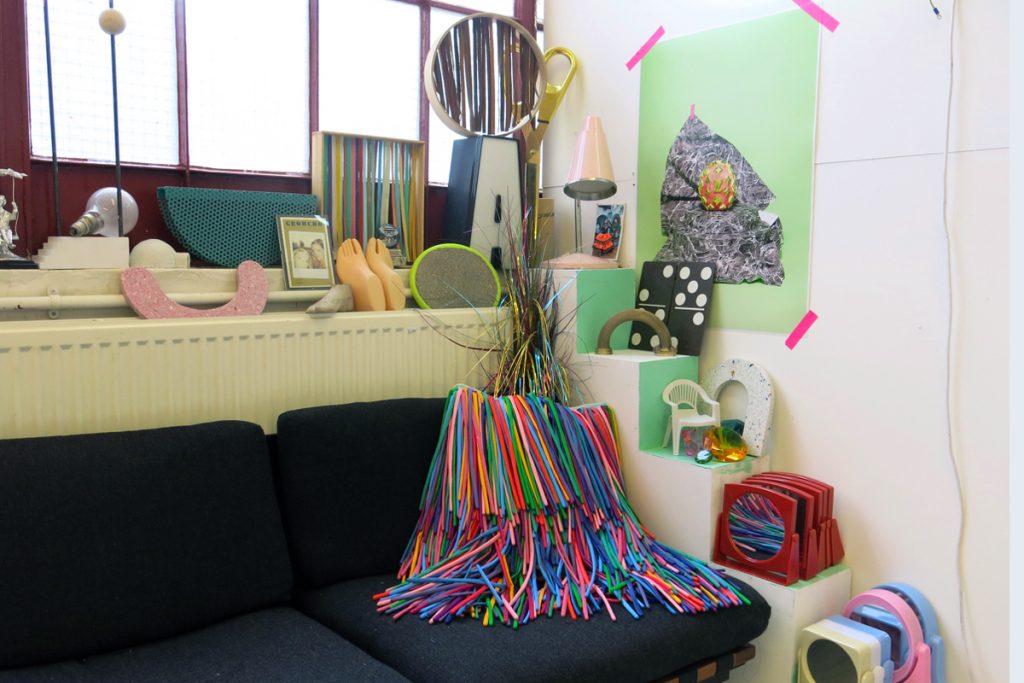
Right by the verdant Regent’s Canal in east London lies a courtyard surrounded by old warehouses that are now home to some of the most exciting up-and-coming designers in the British capital. One of these is Anna Lomax, an artist and set designer who’s worked with everyone from Kenzo to the Tate, and whose genre-spanning pieces include humorous installations, neon signs and tongue-in-cheek holograms. Lomax’s studio space is on the ground floor of the building and she knows all the other people on her level (among them fashion designer Sadie Williams and set designers Ciara Linden-Beale and Sarah Parker), having brought them all together when she and Parker found the space. Lomax—who describes the studio as having a really nice communal atmosphere—spoke with us about her work, the studio space and upcoming projects.
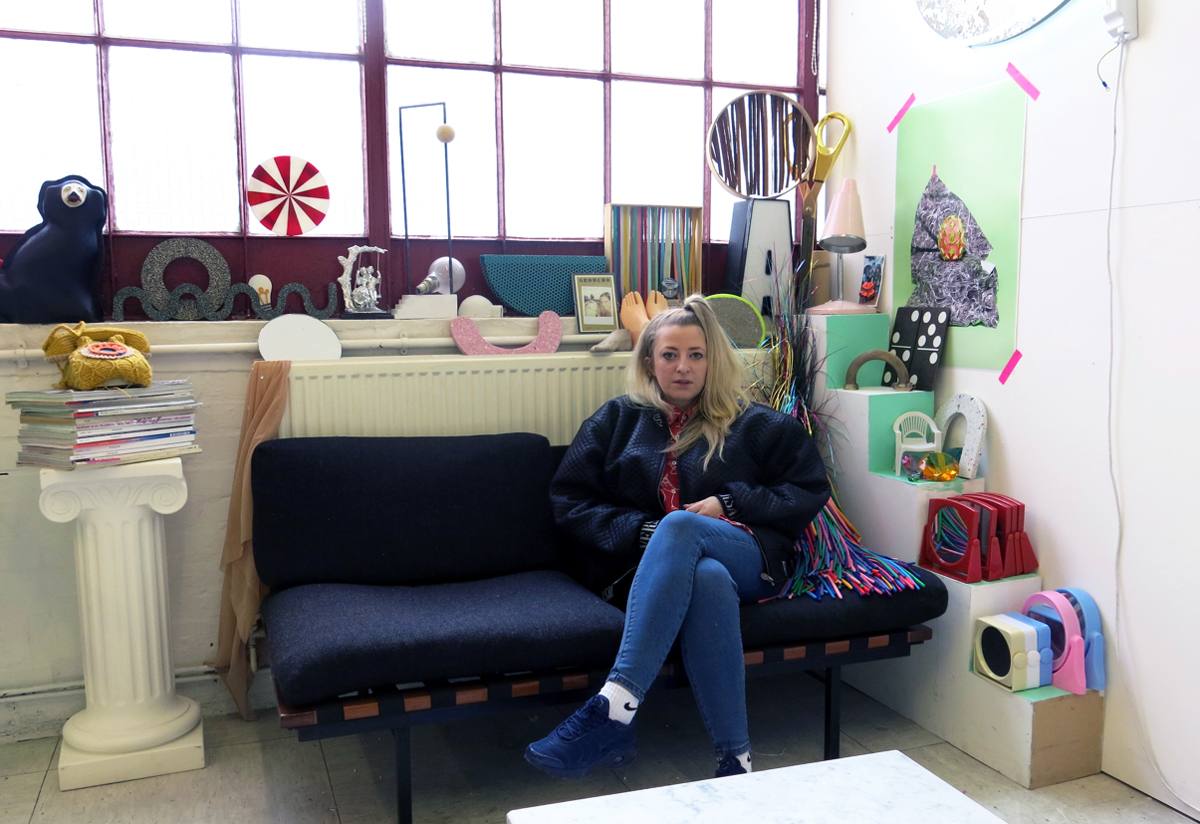
How did you start out as an artist?
I studied illustration at Camberwell in London and left because I needed to get out of the area. After a year of working I went to Brighton to do an illustration course. I come from quite an arty family—both my parents are artists. Weirdly, I’ve got a twin brother and an older sister who aren’t doing anything creative. Mom always said, “Pretty much from the beginning we knew that was going to be what you were going to do, we couldn’t stop you from making stuff out of everything you could find.” After Brighton, I ran a set design business with another girl for five years that was quite successful, and then I did an MA in fine art printmaking at the RCA.

What inspires your work?
I collect a hell of a lot of stuff, always have done. I grew up in Deptford (in South London) with the High Street there, the market, the pound-shops… I guess that’s my culture, it’s where I come from and it’s everything I know. So that’s sort of where my inspiration comes from, whether that’s a texture or a material, or something else that I’ve picked up. I like the way that things in pound-shops are designed but maybe not in a “knowledgeable” design sense. Often the things in there are full of mistakes and they might be functionless, but there’s a sense of humor because you’re like, “Wait, that doesn’t quite hit the mark!” I like that combination of stuff, when the colors are something that’s not completely considered. Sometimes it’s hideous, and sometimes it’s the best thing ever. A lot of my inspiration comes from that.
You also mix everyday items and things that are perceived as luxury a lot.
I’m not sure what the word “luxury” means, you get fed this idea that it’s got to be shiny and polished and all the rest of it, but why? That doesn’t necessarily say luxury. It’s like, if one of the gatekeepers opens the door and says that’s luxury, then it is. I’m interested in the idea of always trying to push that boundary.
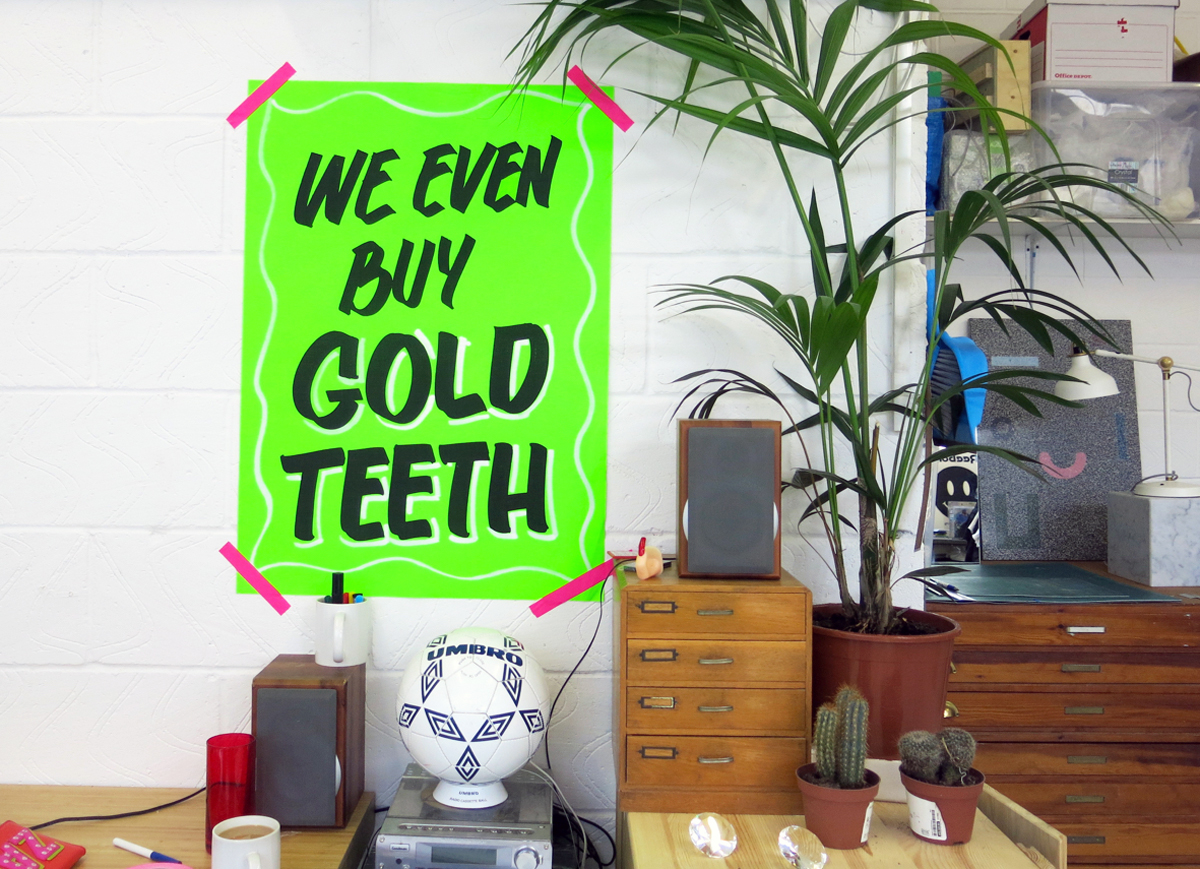
Do you have a favorite area that you work in—editorial or installations, for example?
I never say never to anything really, that’s part of what I love doing—there’s always a new challenge. I don’t like repeating the same thing over and over again. At the moment I’m working with Selfridges on a big installation project that’s coming out in the middle of this year. I’m also working with the Hoxton Hotel as part of the Hoxton collective, and shooting stuff for editorials. I just really like playing with scale, and having different projects on the go.
My favorite material to work with changes all the time. At the minute I’m obsessed with flocked metal. I just really like trying out new things, techniques and combinations of stuff. Like a soft-and-hard kind of thing, or a lacquered surface. I’ve been really obsessed with neon for a while now and made lots of neon stuff, but at the minute I’m mostly into textures. Like carpet—I’ve got rolls and rolls of carpet.
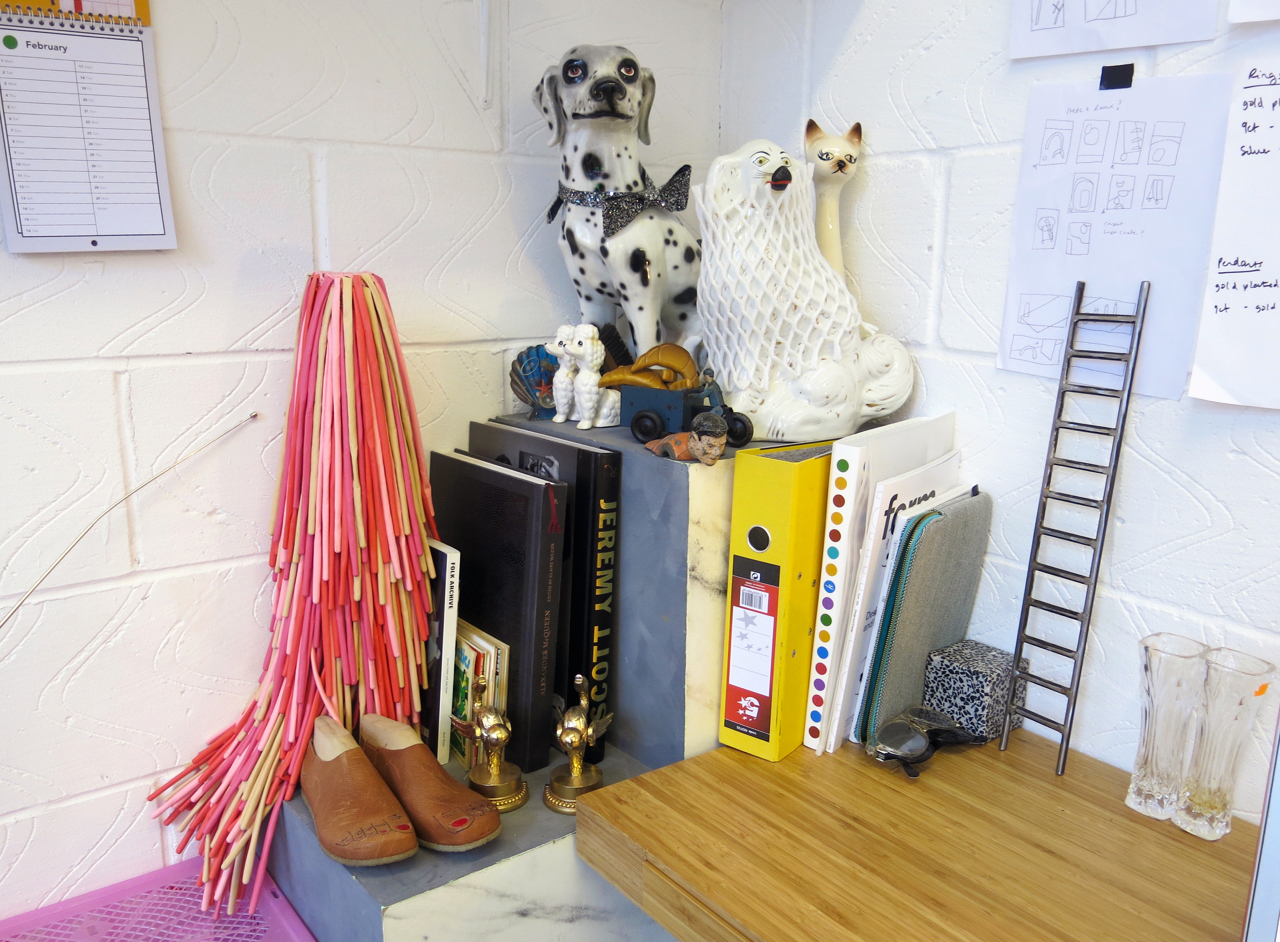
Are most of your pieces made in your studio?
I wish! I think there are certain trades you spend a lifetime perfecting, like making neon signs, and that is something that I really enjoy doing, going out and finding the people who are really great at what they do, giving them something and seeing how it gets interpreted in the field. I’ve got people who make the neon signs, I’ve got welders, things like that. When the projects are commercial it’s such a fast turnaround that you couldn’t physically do it all. When it’s still life or small-scale, I make a lot of the stuff myself, but bigger installations—and especially things that are supposed to be in public—I’ve got to be really safe. And you’d need a massive workshop!
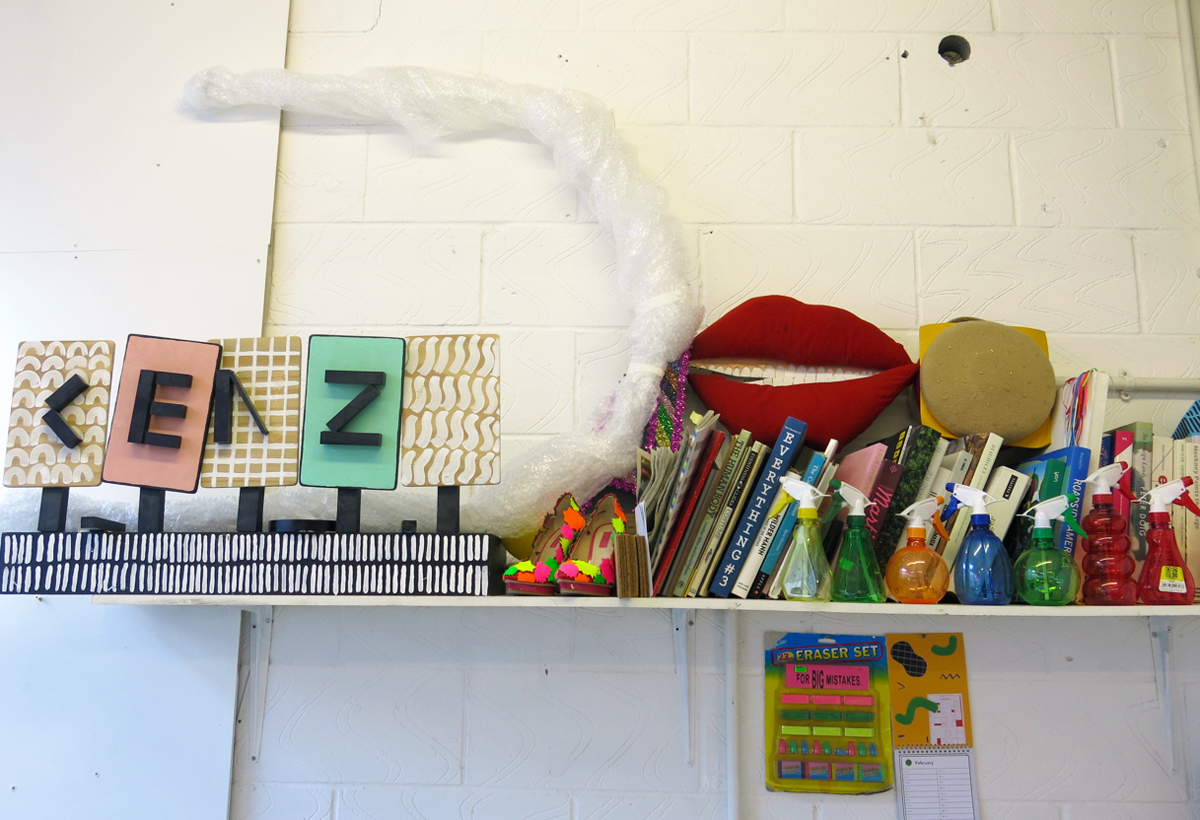
Your art is very visually arresting. When you make it, do you think about how it will look in a digital form?
I don’t know if I do. I know it always winds up as an image, and I collaborate a lot with photographers and their input is always really exciting. I choose carefully who I work with on projects, to make sure that we’ve got similar creative goals and visions as to what we’re creating. I really love collaborating with people—what could be a better job than to work with your friends on a day-to-day basis?
So much work exists digitally now, and in a way it’s great because you get commissioned for loads of projects, but in a way it takes away a lot of the meaning and thought process behind it, because everything is expected to happen so quickly, and so much is demanded of each thing. That can be quite hard, on repeat, to keep an integrity in the work. You need to have a balance between someone being able to go up and physically touch something, and of something being documented. It’s fantastic that you can put something out there, and it’s seen across the world and doesn’t just exist within four walls that only a certain demographic of people will see, but there’s a balance.
Images by Cajsa Carlson












